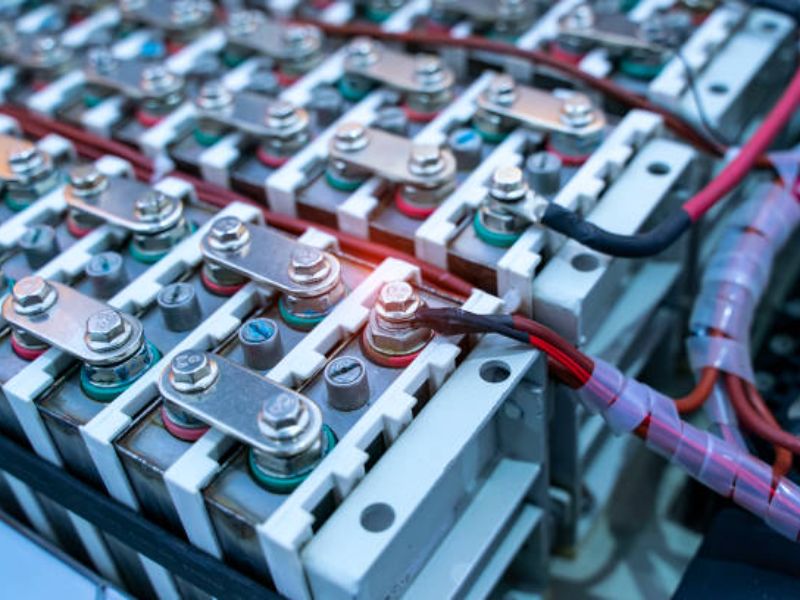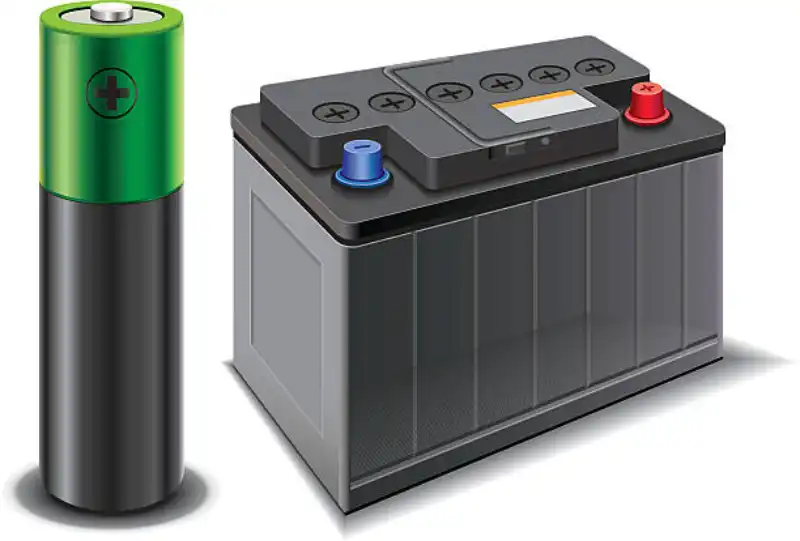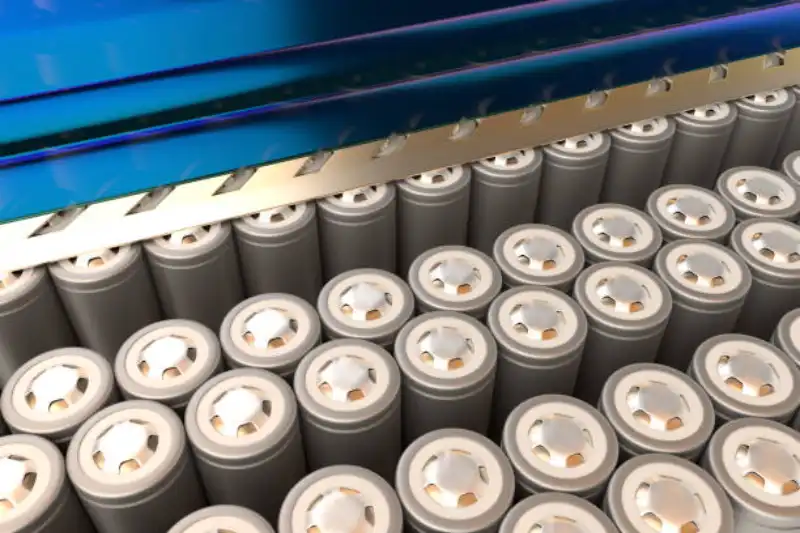Lithium-ion batteries (LIB), an innovative type of rechargeable batteries, have revolutionized the way we store and use energy. Developed in the early 1970s, the sophisticated battery technology, now found in everything from smartphones, laptops, and power tools, to electric vehicles, symbolizes a turning point in energy storage. They operate through the transmission of lithium ions moving from the negative electrode (anode) to the positive electrode (cathode) during discharge and reversing during charging. Lithium batteries have edged out kinds of batteries including nickel-cadmium (Ni-Cd) and nickel-metal-hydride batteries in many ways, making them the preferred type of battery for many applications.

Unpacking the Science of Lithium Ion Batteries
1.1 The Role of Lithium Ions in Energy Transmission
In lithium-ion cell design, lithium ions play a crucial role in energy transmission. What they do is move from the anode, commonly made of graphite or lithium titanate, through the electrolyte, a liquid electrolyte containing lithium salts, to a cathode made of a form of metal oxides such as lithium cobalt oxide or lithium iron phosphate.
1.2 Lithium-Ion Technology in Modern Battery Design
In comparison with the nickel-cadmium or nickel-metal-hydride batteries, the application of lithium-ion technology marks a significant evolution in the battery design, primarily due to its unique advantages like higher power density, minimal memory effect, and a low self-discharge rate. These attributes make them more efficient and reliable than other battery types.
1.3 How Voltage Interacts with Lithium Ions?
The working voltage of a LIB is generally around 3.7 volts, much higher than the 1.2 volts typical of a nickel-cadmium or alkaline battery. Higher voltages mean more power can be derived from a battery of a given size.
The Benefits of Lithium-Ion Batteries
2.1 High Energy Density: Why Lithium Ion Batteries Excel in Energy Storage
High energy density sets lithium-ion batteries apart (Related Article: 3 Pros of High Energy Density of Lithium-ion Battery). It is a distinguishing characteristic in the lithium ion battery pros and cons discussion. These batteries, compared to other kinds of batteries like nickel-cadmium (Ni-Cd) or nickel-metal-hydride (NiMH), can store more energy in the same amount of space. This means that for the same battery weight, lithium-ion can deliver more power, which explains their extensive use in weight-critical applications. Today, you find high energy density batteries in a variety of devices, from mobile phones, laptops, and power tools, to electric cars and other demanding aerospace applications.
2.2 Fast Charging Capability: Saving Time and Enhancing Convenience
Another pivotal advantage of lithium-ion batteries is their fast charging capability. Unlike other rechargeable batteries, which require hours to recharge fully, lithium-ion batteries can absorb a significant amount of charge within the first few minutes of charging. This property, coupled with the fact that they don’t need to be completely discharged before recharging (no ‘memory effect’), has significantly enhanced user convenience. This feature plays a crucial role in fast-paced settings, from allowing a passenger’s smartphone to charge at an airport lounge, to speedy charging stops for electric vehicles during a long trip.
2.3 Long Lifespan: The Durability Factor of Lithium Ion Batteries
Despite their high energy output, lithium-ion batteries have a surprisingly long battery life. With the ability to endure hundreds to thousands of charge and discharge cycles, these batteries often outpace the expected lifetimes of the devices they power. This durability is partly due to their low self-discharge rate and the lack of the cycle-killing memory effect prevalent in other battery chemistries. The long lifespan of lithium-ion batteries allows them to deliver reliable performance over a long time, thereby reducing the cost and inconvenience of frequent replacements. Understanding the impact of aging on lithium-ion batteries is crucial to maximizing their lifespan and performance.
2.4 Low Self-Discharge Rate: Retaining Power for Longer Periods
Lithium-ion batteries exhibit a low self-discharge rate, another significant advantage over traditional battery types. This means that a lithium-ion battery, when not in use, will retain its charge for a longer time than Ni-CD or NiMH cells. This quality becomes particularly important in devices that need to hold a charge over an extended period, such as emergency power backup systems and electric vehicles. In the long run, this feature can contribute to higher overall battery efficiency by minimizing the wasted energy associated with self-discharge.
So while the initial cost of lithium-ion batteries might be higher, the array of performance benefits often makes them a worthwhile investment for many applications.

Exploring the Downsides
3.1 High Initial Cost: Examining the Impact on Battery-Powered Devices
The lithium in lithium-ion batteries isn’t a rare substance, but the complexity of engineering these batteries contributes to their higher cost. Battery technology companies have to invest in safe battery architecture and sophisticated protection circuitry, given the highly reactive nature of lithium. This results in high initial costs compared to other types of batteries, such as nickel-cadmium (Ni-Cd) or nickel-metal-hydride (NiMH) batteries. The impact of these high costs extends to consumer electronics, electric vehicles and other battery-powered devices, pushing up their price points.
3.2 Safety Concerns: Understanding and Mitigating Risks
Safety is a substantial concern when discussing lithium-ion battery pros and cons. Under certain conditions like high temperatures especially temperature extremes or physical damage, lithium-ion batteries pose a risk. Lithium is reactive, and a failure within the battery like a short circuit can lead to a thermal runway — a rapid, uncontrolled increase in temperature, leading to fire or even explosion in extreme circumstances. While instances of such catastrophic failure are rare because of the stringent safety measures employed, they do confer an undeniable risk. It is important to understand the safe limits of lithium-ion batteries to prevent any potential hazards.
3.3 Environmental Impacts: Evaluating the Sustainability Factors
The environmental impact of using lithium-ion batteries presents another challenge. Lithium extraction involves mining, which can disturb ecosystems, contaminate water, or contribute to air pollution. Similarly, cobalt mining, used in some high-performing lithium-ion batteries, has raised concerns over ethical and environmental issues. Additionally, at the end of their life, if not properly recycled, discarded lithium-ion batteries can end up in landfills or incinerators, releasing hazardous substances into the environment.
3.4 Limited Availability of Raw Materials: Addressing Supply and Demand Challenges
The high performance of lithium-ion batteries centers around specific rare earth metals. As demand for these batteries in mobile phones, laptops, and particularly electric cars grows, it puts strain on the overall supply chain of these finite resources. The limited availability of metallic lithium and other vital components like cobalt in the earth’s crust implies a predictable hike in prices in the coming years. Moreover, the political instability in some nations that are key suppliers of these elements also raises supply chain risks for LIB technology.
These downsides are crucial points of consideration when betting on the future of battery technology and sustainable, scalable energy storage solutions. Nonetheless, enormous research and development efforts are currently focused on overcoming these challenges, and improving the safety, affordability, and environmental footprint of lithium-ion batteries.
4.1 Understanding Potential Hazards: Lithium’s Volatility and User Safety
Understanding the potential hazards associated with lithium-ion batteries is critical. If metallic lithium is exposed to the air, for instance, it can cause a fire. Overcharging lithium-ion batteries or charging them too quickly also poses risks.
4.2 Risk Mitigation: Necessary Precautions for Using Lithium-Ion Batteries
By using smart chargers and protection circuits, risks can be minimized. Users are also advised to take precautions like not leaving charging batteries unattended, keeping them out of extreme temperatures, and safely recycling them rather than throwing them in the trash.

Environmental Considerations of Lithium Extraction
5.1 Evaluating the Environmental Impact of Lithium Mining
Lithium mining involves pumping water from underground reservoirs which, when evaporated, leaves behind lithium salt. This process can cause a strain on local water resources. Additionally, it can result in soil degradation due to the chemicals used in mining.
5.2 The Sustainability Challenge: Lithium Ion Battery Disposal
The disposal issue is another concern. While options like recycling centers exist, very few lithium-ion batteries ultimately get recycled. Instead, many end up in landfills, contributing to e-waste.
Future of Lithium-Ion Batteries
6.1 Technological Advances in Addressing Disadvantages
Researchers are continually advancing battery technologies to improve upon and mitigate the disadvantages. These advancements focus on enhancing safety, boosting capacity, reducing cost, and improving energy storage facilities.
6.2 Renewable Energy and the Role of Lithium-Ion Batteries
With the shift towards renewable energy, the demand for efficient, high-capacity energy storage is growing. Lithium-ion battery technology forms the backbone of energy storage systems for solar and wind power (learn: Top 10 Best Batteries for Solar Power Storage). They play a critical role in our transition towards green, sustainable energy.

Conclusion: Lithium Ion Batteries – Balancing Benefits and Drawbacks
Comparing the lithium ion battery pros and cons, they offer compelling reasons for their widespread use. However, it’s important to understand their drawbacks too, indicating the ongoing need for research and technology focus. Overall, lithium-ion batteries are a key player in our technology-centric world, and undeniably, contribute substantially to our energy-dependent future.
Here is a summary table of the pros and cons of lithium-ion batteries for quick reference:
| Pros of Lithium-ion Batteries | Cons of Lithium-ion batteries |
| High energy density | High initial cost |
| Low self discharge rate | Safety Hazards |
| No memory effect | Environmental impact |
| Fast charging | Limited raw material availability |

